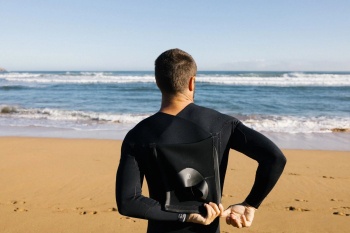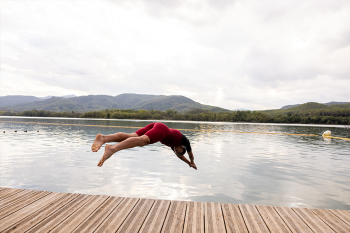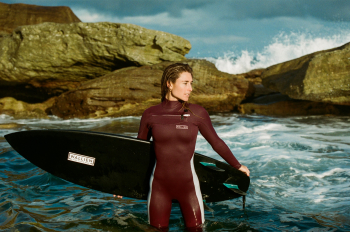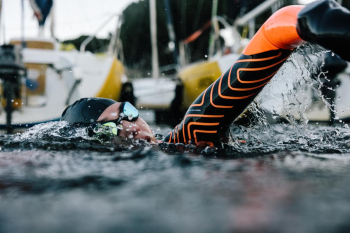Wetsuit Features and Price Differences Explained
Trying to figure out which wetsuit to buy, is like trying to pick a movie on Netflix that you and your two other housemates haven’t seen before. Simply put, it’s an emotional rollercoaster. There’s just too much choice – which isn’t a bad thing at all, however, it just makes the whole process drag out longer than it needs to. And much like the confusing ‘percentage match’ Netflix feels the need to shove in our face, surf brands will invent words describing features that mean nothing to the first-time buyer. Oh, and wetsuit prices, why do they differ so much?
Like most things in life, you get what you pay for. That is, the better the neoprene, flexibility, durability and entry system quality, the more expensive the wetsuit is likely to be. Here we explain how to choose a wetsuit, based upon its features and price.
You can shop all our wetsuits here.
Wetsuit Neoprene
Basically, the thicker the wetsuit, the pricier it’s going to be. But it’s not as if the surf brands are making you pay per mm. It’s more to do with the technology implemented in a ‘winter wetty’ that elevates the price. There’s no need to get upset about it though, as that innovative tech is the reason you’re able to stay out in the chilled water for longer than ever thought humanly possible.
Additionally, there are different types of neoprene associated with varying levels of wetsuits (beginner, intermediate, professional).
Nylon-lined (£)
If you’re new to the surf game and are thinking about purchasing your first wetsuit, chances are, it’s going to be nylon-lined. A more traditional neoprene, the nylon slides against the skin, making it easier to get in and out of – which if you’re a beginner, is essential. Furthermore, nylon acts an extra layer of protection, which means your wetsuit will last longer, without wearing and tearing. Shop the Quiksilver Syncro Series.
Smooth skin (££)
Commonly used for booties, gloves and hoods which are perfect for cold conditions, smooth skin neoprene has a rubber finish which deters water and wind, whilst absorbing warmth. However, cold water wetsuits will often feature smooth skin on the chest and lower back. The only downside to this neoprene is that it’s not as durable and will easily rip if not put on correctly. Shop the Rip Curl Flashbomb.
Air neoprene (£££)
The thing about warm wetsuits is that they’re generally thick – which restricts movement. It’s not really an ideal situation if you plan on being in the water for longer than an hour. You’ll easily fatigue and decide that a cold beer is probably more of an appropriate option than battling through cramps to get a barrel. Thus, air neoprene was developed to increase the warmth of wetsuits without making them super thick. This occurs from having a layer of pierced neoprene to trap air. Commonly seen in the high-end wetsuits. Shop the O'Neill Legend.
Wetsuit Flexibility
It's quite often overlooked by beginners, but if you’re serious about surfing, flexibility is something that should be a high priority. High-end wetsuits will generally have more flex than those for entry-level surfers. Key factors of flexibility are:
- Paddling with ease
- Performing advanced manoeuvres
- Getting in and out of the wetsuit easily
The one thing that hinders flexibility is the thickness of neoprene, and if a brand uses the same neoprene throughout a particular range, it’s going to cause issues for your paddling – unless you’re an Olympic swimmer. Hence, wetsuits will change the neoprene in their high-end suits to allow for more flexibility to be associated with warmth. This will increase the cost though.
Wetsuit Durability (seam construction)
No one wants their wetsuit to fall apart after one surf, let alone a year of surfing. However, different seams will determine the structure-quality of a wetsuit.
Flatlock (£)
Neoprene panels are placed together and then stitched through, leaving a flat stitch on the inside and making this seam comfortable against the skin (but not watertight). This seam type is commonly used in spring/summer entry-level suits i.e. 3mm and thinner, shorties and spring suits. Shop the Roxy Women's Performance.
Stretch Stitch (££)
Certain manufacturers are now using innovative stitching methods that are not watertight but allow much greater stretch than standard flatlock seams. A coiled stitch when relaxed can stretch in use, enabling lightweight, uninhibited movement - found on higher end spring suits and neoprene tops. Shop the Billabong Ladies Salty Jane.
Glued and Blind-Stitched (££)
The staple seam construction for all winter thickness suits (4mm and thicker) and for higher end spring suits/shorties. Panels of neoprene are firstly glued together and then stitched carefully to only pierce halfway through the neoprene, leaving the inside stitch-free and comfortable against the skin. This seam is watertight, so cold water cannot get in. Shop the Roxy Women's Syncro Series.
GBS Taped (££)
Taping the inside of GBS seams with a stretchy neoprene tape makes the seam even more watertight and, importantly, more durable meaning you stay drier for more sessions than with a basic GBS seam. The more taping inside the suit, the drier and warmer you will be, and your suit will last longer. Mid-range suits will have some level of taping, often only at critical seams (where the suit wears first), whereas higher mid-range suits will be 'fully taped' inside. Shop the Rip Curl Ladies G-Bomb.
GBS Liquid Seal (£££)
As the name suggests, this seam features a GBS construction with liquid neoprene poured over the outside stitch, making it doubly watertight and significantly more durable - you'd have to wear right through the liquid seam before you even get to the stitching. This seam is found on high-end suits and the top suits will have an even thinner liquid seal, reducing weight and giving better flexibility. Often GBS Liquid Seal seams are still part taped inside for added durability. Shop the Rip Curl Flashbomb.
Double Liquid Seal – Stitchless (£££)
Yes, stitchless... Panels of neoprene are placed together, and then liquid neoprene is hand poured in thin lines just over the panel joins inside and out. Time-consuming and costly, it is only found on the top suits of leading brands, often with a unique name for this seam type. It is ultra-watertight and offers incredible durability, although stretch is slightly compromised. Shop the Billabong Furnace.
Entry system
Getting in and out of a wetsuit seems like a throw-away thought when surfing, but rest assured, it’s a pivotal element which can change the way you feel about a session. And yeah, different systems will often determine the price.
Back zip (£)
Ahh the nostalgia. Guaranteed if you were born before the millennium your first wetsuit would have had a back zip. It was just the way of the world back then. These days, a back zip will be commonly associated with an entry-level wetsuit, where shoulder movement is often restricted due to the Velcro, and the fact zippers don’t stretch. However, if you're new to surfing, it's the best option to get you going! Additionally, if you have a larger or broad frame, the back zip is a great option, as it's easier to get into. Men shop the Quiksilver Syncro. Women shop the Rip Curl Women's Omega.
Chest zip (££)
The most popular of entry systems on a wetsuit, the chest zip is a favourite amongst regular surfers, and those verging on professionalism. Much less flushing than a back zip so you’ll be warmer for longer, plus you will have more freedom of movement when it comes to paddling. Men shop the Quiksilver Syncro +. Women shop the Billabong Ladies Salty Dayz.
Zipperless (£££)
Similar to a chest zip, the zip free entry system is seen amongst the high-end wetsuits. If you’re serious about your surfing and want to get the best performance out of a session, a zipperless wetsuit is for you. Ultimate stretch allows for sharp manoeuvres and won’t tire you out, so you can stay in the water for longer. However, it's important to note that a zip free isn't as durable as a chest zip, due to the stretching of neoprene panels when getting in and out, multiple times. Men shop the Rip Curl Flashbomb . Women shop the Rip Curl Women's G-Bomb.
**
A lot of the time it will come down to personal preference when choosing a wetsuit. However, the more you surf, the more you will begin to understand the dynamics of a wetsuit, and why certain elements can contribute to overall performance out in the water.
If you're still unsure about which wetsuit it right for you, give us a call on 01702 295678, as we'd love to hear from you and help you through the process.
---
View our full range of wetsuits.
Written by Sam Quennell
@wetsuitoutlet
Updated on 3rd March 2020
Originally published on 5th September 2018 in Wetsuit Guides























































 Visit the US site
Visit the US site  Continuar al ES
Continuar al ES